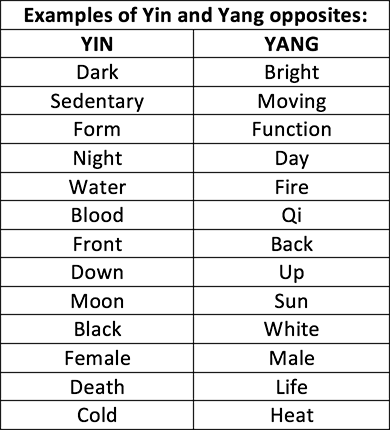You’ve probably heard of the TCM principles Yin and Yang, but do you understand their functions? In this article, Dr. Cheryl Lee outlines a few symptoms that are associated with excess and deficient Yin and Yang within your body, and introduces you to what acupuncture can do to help.
Yin and Yang Theory is a fundamental pillar of Chinese Medicine. It is also an example of how  complete opposites must co-exist in order to create balance within the body and the world. Every aspect of life can be categorized as relatively more yin or more yang.
complete opposites must co-exist in order to create balance within the body and the world. Every aspect of life can be categorized as relatively more yin or more yang.
Traditional Chinese Medicine examines many aspects of health using different tools to diagnose but, ultimately, everything can be broken down into yin and yang. There is a constant balance between yin and yang: when one becomes too deficient the equilibrium is lost and symptoms and pathologies begin to appear. The goal is to maintain a happy medium as often as possible.
Yin Deficiency
A common example of yin deficiency is hot flashes during menopause. This is most often diagnosed as Yin deficient heat. Estrogen, being a yin hormone, naturally begins to decline with age leading to a yin deficiency and a relative excess of yang. If you think of yin as water and yang as fire, without  enough water to balance fire, the fire will rage out of control, thus symptoms of heat will appear in this case.
enough water to balance fire, the fire will rage out of control, thus symptoms of heat will appear in this case.
Yang Deficiency
A common example of excess yang is high blood pressure. This can manifest with heat/redness in the face, dizziness, headache, irritability, bitter taste in the mouth, and red eyes. All of these symptoms are hot in nature and indicate an excess yang pattern.
Chinese Medicine takes Yin and Yang into consideration for most pathologies along with a variety of other things. The principles of treatment are simple: if Yin is deficient, one must tonify; if Yang is in excess, one must reduce; and so forth. This is accomplished through acupuncture, herbal therapy, and lifestyle recommendations.
If this sounds like something you would like to pursue, you might consider booking an appointment.
